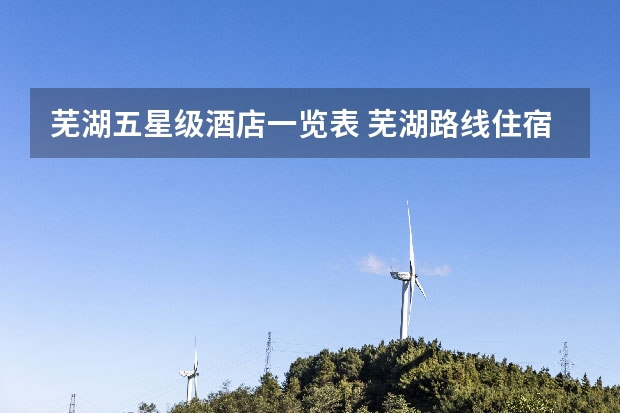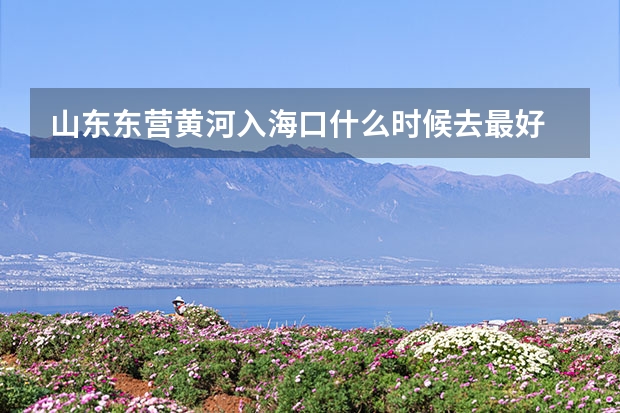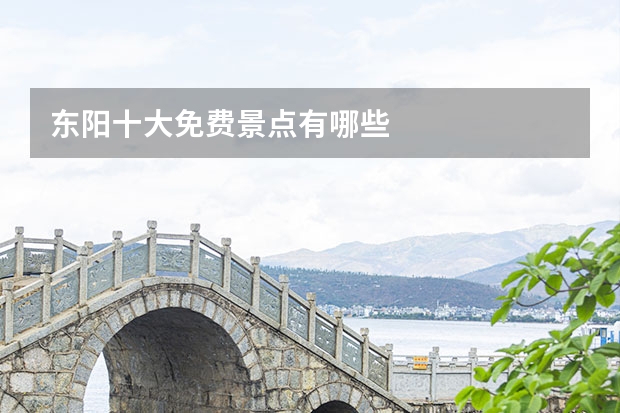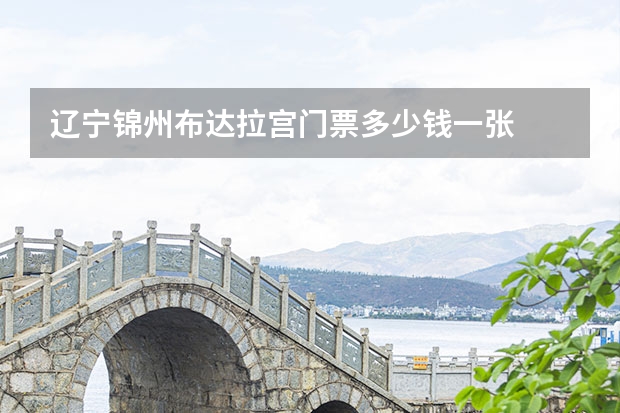泰安的各种景点的英语(泰山景点英语) 2023泰山门票_泰山门票价格_泰山门票多少钱
2023-07-24 15:01:47 | 明耀户外网

泰安的各种景点的英语(泰山景点英语)
1. 泰山景点英语
泰山 Mount Tai(山东的那个泰山)电影中的泰山是 Tarzan n. 泰山(美国影片人猿泰山的主人公);健壮、灵活的男子
2. 在泰山的英语
MountTai前面是不用加定冠词的,这有一个规律可循:中心词在前面的专有名词词组,都不加冠词,如:MountHuang(黄山)中心词在后面的专有名词词组,基本上加冠词,如:theHuangshanMountains(黄山),theGreatWall
3. 游览泰山的英语
I Climbed Mount Tai
It was a drizzly day in autumn. My classmates and I started to climb Mount Tai. On the half way some of them were too tired to go on. They suggested going back. But I didn't want to give up, so I insisted on climbing up. At last we all tried our best to reach the top.

4. 泰山之旅的英语
MountTai前面是不用加定冠词的,这有一个规律可循:中心词在前面的专有名词词组,都不加冠词,如:MountHuang(黄山)中心词在后面的专有名词词组,基本上加冠词,如:theHuangshanMountains(黄山),theGreatWall
5. 泰山旅游攻略英语
Mount Tai (Chinese: 泰山; pinyin: Tài Shān) is a mountain of historical and cultural significance located north of the city of Tai'an, in Shandong Province, China. The tallest peak is Jade Emperor Peak (simplified Chinese: 玉皇顶; traditional Chinese: 玉皇顶; pinyin: Yùhuáng Dīng), which is commonly reported as 1545 metres (5069 feet) tall[1], but is described by the Chinese government as 1532.7 metres (5028.5 feet)[2].Mount Tai is one of the "Five Sacred Mountains of Taoism". It is associated with sunrise, birth, and renewal, and is often regarded the foremost of the five. The temples on its slopes have been a destination for pilgrims for 3,000 years.Contents [hide]1 Location 2 History 3 Natural significance 4 Cultural significance 4.1 Dai Miao 4.2 Other Monuments 5 Infrastructure 6 Cultural references 7 Footnotes 8 External links [edit] Location Location within ChinaMount Tai is located just north of the city of Tai'an and to the south of the provincial capital Jinan. It extends from 150 to 1,545 metres above sea level and covers an area of 426 square kilometres at its base. The Jade Emperor Peak is located at 36° 16′N and 117° 6′E.[edit] HistoryTraces of human presence at Mount Tai date back to the Paleolithic period. Human settlement of the area can be proven from the neolithic period onwards. During this time, two cultures had emerged near the mountain, the Dawenkou to the north and Longshan to the south. In the Spring and Autumn Period, the mountain lay on the boundary between the competing States of Qi (north of the mountain) and Lu (south). In the ensuing Warring States Period, the State of Qi erected a 500 km-long wall to protect itself against an invasion. Ruins of this wall are still present today. The name Tai'an of neighboring city is attributed to the saying "If Mount Tai is stable, so is the entire country" (both characters of Tai'an, 泰安, have independent meaning "peace").Religious worship of Mount Tai has a tradition of 3,000 years, it has been practiced from the time of the Shang to that of the Qing Dynasty. Over time, this worship evolved into an official imperial rite and Mount Tai became one of the principal places where the emperor would pay homage to Heaven (on the summit) and Earth (at the foot of the mountain) in the Fengshan Sacrifices (封禅). In 219 BC, Qin Shi Huang, the first Emperor of China, held a ceremony on the summit and proclaimed the unity of his empire in a famous inscription.Mount Tai has been a UNESCO World Heritage Site since 1987. In 2003, it attracted around 6 million visitors. A renovation project to be completed by late October 2005 aims at restoring cultural relics and the renovation of damaged buildings of cultural significance. Modern buildings which are inconsistent with the historic landscape are to be demolished. The total cost of the work is estimated at 15 million yuan (approximately US$1.8 million).[edit] Natural significance The Immortal Bridge, a natural landscapeMount Tai is a tilted fault-block mountain with height increasing from the north to the south. It is the oldest example of a paleo-metamorphic formation from the Cambrian Period in eastern China. Known as the Taishan Complex, this formation contains magnetized, metamorphic, and sedimentary rock as well as intrusions of other origins during the Archean Era. The uplift of the region started in the Proterozoic Era, by the end of the Proterozoic, it had become part of the continent.Besides the Jade Emperor Peak, other distinctive rock formations are the Heaven Candle Peak, the Fan Cliff, and the Rear Rock Basin.Mount Tai lies in the zone of oriental deciduous forest; about 80% of its area is covered with vegetation. The flora is known to comprise almost 1,000 species. Some of the trees in the area are very old and have cultural significance, such as the Han Dynasty Cypresses, which were planted by the Emperor Wu Di, the Tang Chinese Scholartree (about 2,100 years old), the Welcoming-Guest Pine (500 years old) and the Fifth-Rank Pine, which was named originally by the Emperor Qin Shi Huang, but was replanted about 250 years ago.[edit] Cultural significance[edit] Dai Miao Dai Temple at Mount TaiThe Temple of the God of Mount Tai, known as the Dai Temple (Dai Miao) is the largest and most complete ancient building complex in the area. It is located at the foot of Mount Tai in the city of Tai'an and covers an area of 96,000 square meters. The temple was first built during the Qin Dynasty. Since the time of the Han Dynasty (206 BC - 220 AD), its design has been a replica of the imperial palace, which makes it one out of three extant structures in China with the features of an imperial palace (the other two are the Forbidden City and the Confucius Temple in Qufu). The temple has five major halls and many small buildings. The centerpiece is the Palace of Heavenly Blessings (Tian Kuang), built in 1008, during the Northern Song Dynasty. The hall houses the mural painting "The God of Mount Tai Making a Journey", dated to the year 1009. The mural extends around the eastern, western and northern walls of the hall and is 3.3 metres high and 62 metres long. The theme of the painting is an inspection tour by the god. Next to the Palace of Heavenly Blessings stand the Yaocan Pavilion and the entrance archway as well as the Bronze Pavilion in the northeast corner. The Dai Temple is surrounded by the 2,100 year-old Han Dynasty cypresses.Dong Yue Temple at Mount Tai[edit] Other MonumentsA flight of 7,200 total steps (including inner temple steps), with 6,293 Official Mountain Walkway Steps, lead up the East Peak of Mount Tai, along its course, there are 11 gates, 14 archways, 14 kiosks, and 4 pavilions.In total, there are 22 temples, 97 ruins, 819 stone tablets, and 1,018 cliff-side and stone inscriptions located on Mount Tai. These include the Azure Cloud Temple dedicated to the daughter of the God of Mount Tai, the goddess Laomu and the Divine Rock Temple which features the Thousand-Buddhas Hall with painted Arhat statues.[edit] Infrastructure Zeng Fu Temple at Mount Tai Stone inscriptions at Mount TaiVisitors can reach the peak of Mount Tai via a bus which terminates at the Midway Gate to Heaven, from there a cable car connects to the summit. Covering the same distance on foot takes from two and a half to six hours. The supplies for the many vendors along the road to the summit are carried up by porters either from the Midway Gate to Heaven or all the way up from the foot of the mountain.To climb up the mountain, one can take one of two routes. The more popular east route starts from Taishan Arch. On the way up the 7,200 stone steps, the climber first passes the Ten Thousand Immortals Tower (Wanxianlou), Arhat Cliff (Luohanya), and Palace to Goddess Dou Mu (Doumugong). The climbing from downtown up the mountain can take two and a half hours for the avid hiker to six hours for the leisure pace. To the northeast of the Palace to Goddess Dou Mu is Sutra Rock Valley in which the Buddhist Diamond Sutra was cut in characters measuring fifty centimeters across believed to be inscribed in the Northern Wei Dynasty. The west route, taken by fewer tourists, is more scenic, but has less culture heritage.[edit] Cultural referencesThe Chinese idiom "泰山北斗" (lit. Mount Tai & Big Dipper) is an epithet for a person of great distinction. According to an ancient quotation from Sima Qian, "Though death befalls all men alike, it may be weightier than Mount Tai or lighter than a feather." Mao Zedong referenced this quote in the 20th century: "To die for the people is weightier than Mount Tai, but to work for the fascists and die for the exploiters and oppressors is lighter than a feather". [1] Rage Against the Machine referenced this in the song "Year of tha Boomerang": "So I'm goin' out heavy sorta like Mount Tai". In 1987, Canadian progressive rock band Rush put out the Hold Your Fire album, containing the song "Tai Shan." The song was about drummer and lyricist Neil Peart's journey to Mount Tai. The Dai Miao is featured in Sid Meier's Civilization IV as a religious complex that can be built by a Great Prophet, thus establishing a holy shrine dedicated to Taoism in the Taoist holy city. Tai Shan is the name of the most popular beer of most of Western Shandong province. A popular Vietnamese saying Công cha như núi Thái Sơn, nghĩa mẹ như nước trong nguồn chảy ra, một lòng thờ mẹ kính cha, cho tròn chữ hiếu mới là đạo con, mentions Thai Son mountain which may be translated into Chinese as Tai Shan, and refers a father's work ethics to the grandeur of the mountain
6. 泰山景点英语作文
Remember the park 公园游玩记
Today, my father and I went to the mountain park.
今天,我和爸爸去了虎山公园。
Hushan Park Peach opened, very beautiful. Through "Lao", a stone inside the pool, there are many coins on a stone, it is a people. We went to the reservoir, the reservoir water is green.
虎山公园的桃花开了,美丽极了。路过了“太上老君观”,里面的水池里有石头,石头上有许多硬币,那都是人们许愿的。我们又走到了水库,水库的水很绿。
In these days, I saw a sign hanging on the Platycladus orientalis, and the sign: "ancient trees in Taishan". These trees are tall and thick.
在游玩的时候,我看到了侧柏,侧柏上挂着牌子,牌子上写着“泰山古树名木”。这些树又高又粗。
In these days, I also met a Zang chen.
在游玩的时候,我还遇到了臧晨一。
Play for a while, I was unable to part of the home.
玩了一会,我就恋恋不舍的回家了。
7. 泰山景点英语怎么说
Last Sunday my classmates and I had a travel to Taishan Mountain.
We got together at 6:30 in the morning,and then we took a bus there.When we got the foot of Taishan Mountain,there were so many tourists from all over the world.Luckily we made friends with two students from USA.It was so important for us to learn English well.
Then we began our climbing mountain trip.It was easy at first but then we felt more and more tired.But we still tried our best to reach the top.How excited we were!
Then we held a party on the top of Taishan Mountain.We sang songs,danced,drank.It was a happy trip.

2023泰山门票_泰山门票价格_泰山门票多少钱
2023泰山门票_泰山门票价格_泰山门票多少钱
泰山自然和文化遗产保护区位于山东省、泰安市和济南市境内,1983年经国务院批准列入国家重点风景名胜区,1987年12月11日联合国教科文组织世界遗产委员会第11届全体会议正式接纳为自然文化遗产,总面积24200公顷。 古称岱宗,面积426平方公里,海拔1545米。泰山雄伟壮丽,历史悠久,文物众多,以“五岳独尊”的盛名称誉古今。巍巍泰山就像一座民族的丰碑屹立于中华大地,举世瞩目。 明耀户外网
泰山门票价格
2023泰山门票旺季价格:125元/人(每年2月1日至11月30日执行);淡季价格:100元/人(12月1日至次年1月31日执行)。
泰山门票详细说明
|
景 点 |
票 价 |
开放时间 |
说 明 |
|
泰山门票 |
旺季:125元/人 淡季:100元/人 |
全天 |
1、每年2月1日至11月30日执行旺季价格,12月1日至次年1月31日执行淡季价格; 2、对学生、60岁以上老年人凭证享受旺、淡季价格半价优惠; 3、对现役军人、革命伤残军人、军队离退休干部、残疾人、儿童(1.2米以下)、70岁以上老年人凭有效证件实行免费进山; 4、对教师、省部级以上劳模、英模、道德模范享受门票优惠,旺季每人100元,淡季每人80元; 5、特殊日期(每年农历正月初二、三月三、九月九)对60岁以上老年人免费进山。 |
|
桃花峪彩石溪半山游 |
50元/人 |
8:00——17:00 |
有特殊情况不能按时开放的,请以售票点通知为准 |
|
天外村至中天门旅游车 |
上山:30元/人 下山:30元/人 |
全天 |
临时有特殊情况不能通车的,请以售票点通知为准 |
|
桃花峪至桃花源旅游车 |
上山:30元/人 下山:30元/人 |
旺季:7:30——17:30 淡季:8:30——17:00 |
临时有特殊情况不能通车的,请以售票点通知为准 |
|
中天门索道 |
单程:100元/人 |
中天门索道: 4月1日至10月31日: 7:00——17:30 4月1日至10月31日: 8:00——17:00 11月1日至次年3月31日: 9:00——16:00 |
1、儿童满1.2米需购买成人票; 2、索道单程运行时间8-15分钟; 3、重大节日将视游客量适当延长营业时间; 4、遇大风,雷电天气或检修时将暂时停运; 5、如有团队预约,请提前电话联系各索道站; 6、咨询电话:中天门:0538-8222606;桃花源:0538-8330763;后石坞:0538-8330765 |
|
桃花源索道 |
|||
|
后石坞索道 |
单行:20元/人 |
4月1日至10月31日 8:30—16:00 11月1日至次年3月31日 冬季防火期,不运营 |
|
|
岱 庙 |
30元/人 |
8:00——17:00 |
有特殊情况不能按时开放的,请以售票点通知为准 |
备注:以上各景点泰山门票价格和开放时间仅供参考,如遇特殊情况,请以当时售票点门票价格和开放时间为准。
泰山介绍
泰山是我国的“五岳”之首,又称岱山、岱宗、岱岳、东岳、泰岳等。名称之多,实为全国名山之冠。春秋时改称泰山。泰山前邻孔子故里曲阜,背依泉城济南,面积达426平方千米,主峰玉皇顶海拔1532.7米,气势雄伟,拔地而起,有“天下第一山”之美誉。几千年来一直是东方政治、经济、文化的中心。泰山有着深厚的文化内涵,其古建筑主要为明清的风格,将建筑、绘画、雕刻、山石、林木融为一体,是东方文明伟大而庄重的象征。1987年泰山被联合国教科文组织列入世界自然文化遗产名录。
泰山
几千年来,泰山成为历代帝王封禅祭天的神山,随着帝王封禅,泰山被神化,因而又享有“五岳之长”的称号。佛道两家,文人名人纷至沓来,给泰山与泰安留下了众多名胜古迹。道教称第二小洞天﹐名其岳神为天齐王。泰山自然景观雄伟高大,有数千年精神文化的渗透和渲染以及人文景观的烘托而被称为“五岳之首”,它是中华民族的精神文化的缩影,而今又成为世界珍贵遗产。
泰山
泰山风景名胜以泰山主峰为中心,呈放射状分布,由自然景观与人文景观融合而成。从祭地经帝王驻地的泰城岱庙,到封天的玉皇顶,构成长达十公里的地府——人间——天堂的一条轴线。中华民族几千年的文化历史长河,使泰山已成为中华民族的象征。气势磅礴的泰山,知名度可与万里长城媲美。从司马迁的名言:“人固有一死,或重于泰山,或轻于鸿毛。”到“泰山压顶不弯腰”,杜甫“会当凌绝顶,一览众山小。”……,都在不断加深着我们对泰山的向往。登临泰山,犹如攀登长城一样,成为许多中国人的梦想。
泰山
泰山日观峰(拱北石)泰山最引人入胜的地方就是泰山是中国历史上受过皇帝封禅的名山。同时泰山也是佛、道两教兴盛之地,是历代帝王朝拜之山。历代帝王所到之处,建庙塑像,刻石题字。岱庙内,汉武帝植下的柏树翠影婆娑;红门宫前,孔子“登泰山小天下”的感慨,余音缭绕;回马山上,唐玄宗勒马而回的怯懦,神态犹现;云步桥畔,秦始皇敕封的五大夫松,瘦骨昂藏;十八盘道,李白、杜甫历代文人“笑拍红崖咏新作”,墨意未尽,豪风犹在;碧霞祠里,隆重的封禅仪式绰绰伊始。此外还有岱庙、普照寺、王母池、经石峪、碧霞祠、日观峰、南天门、玉皇顶等主要名胜古迹。
泰山兼具古、丽、幽、妙,摩崖碑碣数不胜数,庙宇观堂满山遍布,山势壮丽,[1]自然景观巍峨、雄奇、沉浑、峻秀。全山有古建筑群20多处,历史文化遗迹2000多处,历代文人雅士吟咏题刻和碑记无数。泰山的自然风光更是泰山引人之处,泰山高峰峻拔,雄伟多姿,既是“天然山岳公园”,又是“东方历史文化缩影”。泰山山谷幽深,松柏漫山,著名风景名胜有天柱峰、日观峰、百丈崖、仙人桥、五大夫松、望人松、龙潭飞瀑、云桥飞瀑、三潭飞瀑等。
:97616 . net
-
 芜湖五星级酒店一览表 芜湖路线住宿推荐
芜湖五星级酒店一览表 芜湖路线住宿推荐2024-01-12 01:23:56
-
 山东东营黄河入海口什么时候去最好
山东东营黄河入海口什么时候去最好2024-01-05 01:59:45
-
 东阳十大免费景点有哪些
东阳十大免费景点有哪些2023-12-08 15:39:57
-
 辽宁锦州布达拉宫门票多少钱一张
辽宁锦州布达拉宫门票多少钱一张2023-12-16 14:27:47
-
 博山山头十大免费景点有哪些
博山山头十大免费景点有哪些2023-12-20 14:29:02
-
 保定唐县十大旅游景点有哪些
保定唐县十大旅游景点有哪些2023-12-21 12:12:27